Video
A man rescues a lion tamarin pup and returns it to his mother.
(Source)
8K notes
·
View notes
Text
Researchers at the Sydney Zoo deployed a robot dog to study how animals would behave in its presence.
The Unitree robot dog, dubbed Sparky, was put face-to-face with two cheetahs inside their enclosure. While the cheetahs didn’t seem particularly fond of their new robot friend, Sparky was able to hold its ground.
#bioengr#health#biomedical#science#technology#engineering#artificial intelligence#cyborg#automation#mecha#robot#zoo#lifestyle#trending#usa
31 notes
·
View notes
Photo

Gonorrhea (AKA The Clap) Is Excellent At Resisting Antibiotics
by Rina Shaikh-Lesko / NPR
People like to make jokes about gonorrhea.
Maybe it’s because this sexually transmitted disease is known as “the clap” (perhaps a reference to the French term “clapier,” meaning brothel, or to an early treatment – clapping a heavy object on the man’s sexual organ to get discharge to come out).
See More Images Of Neisseria Gonorrhea
As the old (and not very funny) joke goes, “if you spread it around, is it called applause?”
But a new study illustrates why this sexually transmitted disease is no laughing matter. Neisseria gonorrhoeae, the bacterium that causes gonorrhea, is developing resistance to the antibiotics that have successfully treated it for decades.
A global group of experts on sexually transmitted diseases published an article in the scientific journal, PLOS Medicine, outlining the challenges of drug-resistant gonorrhea. They surveyed 77 countries that participate in a global gonorrhea tracking program and found that more than 90 percent report some kind of antibiotic-resistant gonorrhea.
That’s bad news for patients. Because while gonorrhea doesn’t have the death toll that untreated HIV does — annual deaths from gonorrhea are about 2,300 — it still causes incalculable suffering. About 78 million adults contracted the disease in 2012, according to the World Health Organization. Symptoms include painful urination, itching and a pus-like discharge from the penis, vagina or anus, or a sore throat (in throat infections).
Read the entire article
118 notes
·
View notes
Text
The Psychology of Stabbing
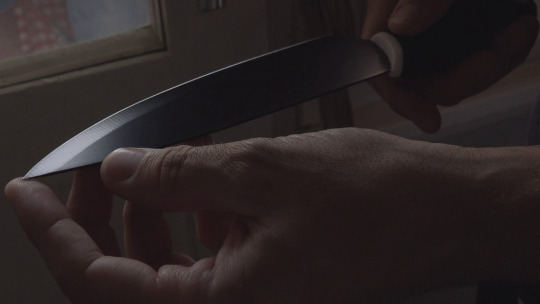
The way someone murders another person says a lot. In the instance of a knife, it can help gauge the height of a murderer. It can help determine their strength level and build. It can even tell you which hand they used.
But what about psychologically? Does it tell you anything about that? Absolutely.
Stabbings are often personal.
In order to stab someone to death, you have to be in a very close proximity to them. It’s not generally a weapon used in self defense or in professional killings. That’s because stabbing someone requires manually killing the person, it’s a lot more intense than pulling a trigger.
It usually involves a lot of anger.
Stabbings require a lot more strength than you would assume. The number of stab wounds also tells a lot about the killer. And if there is postmortem stabbing as well, it can signify that the killer was close to the victim and had a great amount of rage.
It’s often a crime of passion.
Of course this isn’t always true. But stabbing isn’t the most effective method of murder. If you don’t know where to stab, if you can’t stab deeply enough, and if it’s not the right kind of knife, the victim has a good chance of survival. Of course stabbings are serious and very lethal, but compared to some other methods it’s not as practical and effective. Especially in relatives or spousal murder, it just happens to be the weapon they have laying around.
515 notes
·
View notes
Text
MIT engineers have developed a magnetically steerable, thread-like robot that can actively glide through narrow, winding pathways, such as the labrynthine vasculature of the brain.
In this new paper, the researchers combined their work in hydrogels and in magnetic actuation, to produce a magnetically steerable, hydrogel-coated robotic thread, or guidewire, which they were able to make thin enough to magnetically guide through a life-size silicone replica of the brain’s blood vessels.
The core of the robotic thread is made from nickel-titanium alloy, or “nitinol,” a material that is both bendy and springy. Unlike a clothes hanger, which would retain its shape when bent, a nitinol wire would return to its original shape, giving it more flexibility in winding through tight, tortuous vessels. The team coated the wire’s core in a rubbery paste, or ink, which they embedded throughout with magnetic particles.
Finally, they used a chemical process they developed previously, to coat and bond the magnetic covering with hydrogel — a material that does not affect the responsiveness of the underlying magnetic particles and yet provides the wire with a smooth, friction-free, biocompatible surface.
They demonstrated the robotic thread’s precision and activation by using a large magnet, much like the strings of a marionette, to steer the thread through an obstacle course of small rings, reminiscent of a thread working its way through the eye of a needle.
The researchers also tested the thread in a life-size silicone replica of the brain’s major blood vessels, including clots and aneurysms, modeled after the CT scans of an actual patient’s brain. The team filled the silicone vessels with a liquid simulating the viscosity of blood, then manually manipulated a large magnet around the model to steer the robot through the vessels’ winding, narrow paths.
#mit#engineering#health#biomedical#health engineering#science#technology#lifestyle#innovation#3dprinter#magnetic#doctor#surgery#COVID#brain#neurology
36 notes
·
View notes
Photo
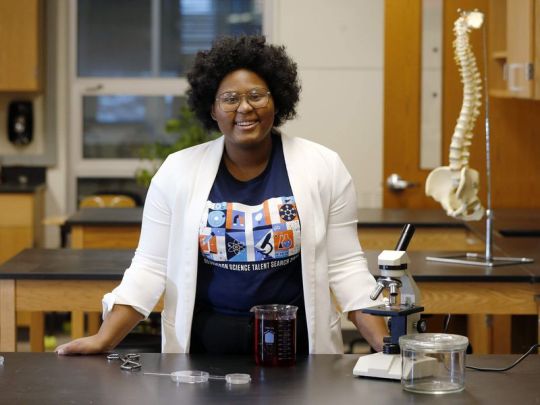
This High Schooler Invented Color-Changing Sutures to Detect Infection
By Theresa Machemer
Dasia Taylor has juiced about three dozen beets in the last 18 months. The root vegetables, she’s found, provide the perfect dye for her invention: suture thread that changes color, from bright red to dark purple, when a surgical wound becomes infected.
The 17-year-old student at Iowa City West High School in Iowa City, Iowa, began working on the project in October 2019, after her chemistry teacher shared information about state-wide science fairs with the class. As she developed her sutures, she nabbed awards at several regional science fairs, before advancing to the national stage. This January, Taylor was named one of 40 finalists in the Regeneron Science Talent Search, the country’s oldest and most prestigious science and math competition for high school seniors.
….
“I’ve done a lot of racial equity work in my community, I’ve been a guest speaker at several conferences,” says Taylor. “So when I was presented with this opportunity to do research, I couldn’t help but go at it with an equity lens.”
Before the Covid-19 pandemic, Taylor spent most of her time after school in the Black History Game Show, a club she’s been a member of since eighth grade, and attending weekly school board and district meetings to advocate for an anti-racist curriculum. For the four months leading up to her first regional science fair in February 2020, Taylor committed Friday afternoons to research under the guidance of her chemistry teacher, Carolyn Walling.
Healthy human skin is naturally acidic, with a pH around five. But when a wound becomes infected, its pH goes up to about nine. Changes in pH can be detected without electronics; many fruits and vegetables are natural indicators that change color at different pH levels.
“I found that beets changed color at the perfect pH point,” says Taylor. Bright red beet juice turns dark purple at a pH of nine. “That’s perfect for an infected wound. And so, I was like, ‘Oh, okay. So beets is where it’s at.’”
Next, Taylor had to find a suture thread that would hold onto the dye. She tested ten different materials, including standard suture thread, for how well they picked up and held the dye, whether the dye changed color when its pH changed, and how their thickness compared to standard suture thread. After her school transitioned to remote learning, she could spend four or five hours in the lab on an asynchronous lesson day, running experiments.
A cotton-polyester blend checked all the boxes. After five minutes under an infection-like pH, the cotton-polyester thread changes from bright red to dark purple. After three days, the purple fades to light gray.
Working with an eye on equity in global health, she hopes that the color-changing sutures will someday help patients detect surgical site infections as early as possible so that they can seek medical care when it has the most impact. Taylor plans to patent her invention. In the meantime, she’s waiting for her final college admissions results.
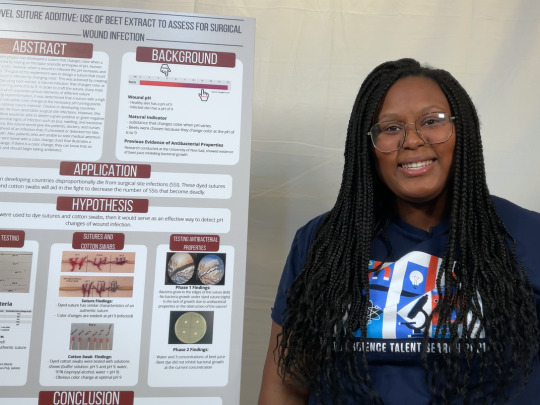
13K notes
·
View notes
Text
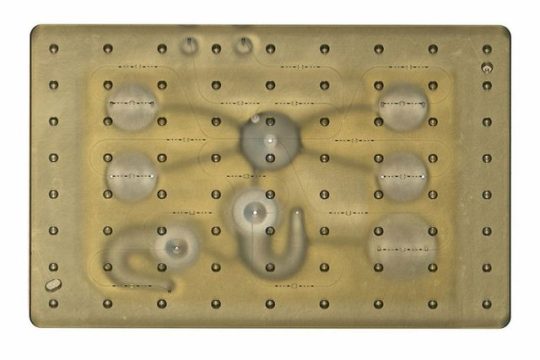
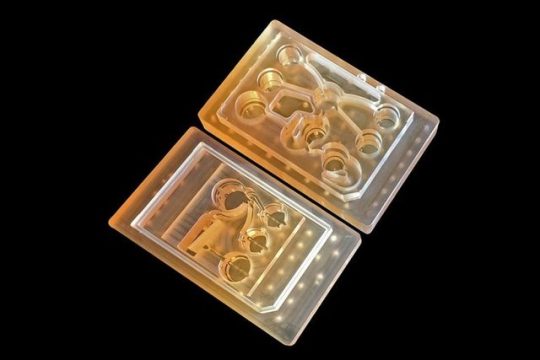
MIT engineers have developed new technology that could be used to evaluate new drugs and detect possible side effects before the drugs are tested in humans. Using a microfluidic platform that connects engineered tissues from up to 10 organs, the researchers can accurately replicate human organ interactions for weeks at a time, allowing them to measure the effects of drugs on different parts of the body.
Such a system could reveal, for example, whether a drug that is intended to treat one organ will have adverse effects on another. “Some of these effects are really hard to predict from animal models because the situations that lead to them are idiosyncratic,” says Linda Griffith, the School of Engineering Professor of Teaching Innovation, a professor of biological engineering and mechanical engineering, and one of the senior authors of the study. “With our chip, you can distribute a drug and then look for the effects on other tissues, and measure the exposure and how it is metabolized.” These chips could also be used to evaluate antibody drugs and other immunotherapies, which are difficult to test thoroughly in animals because they are designed to interact with the human immune system.
David Trumper, an MIT professor of mechanical engineering, and Murat Cirit, a research scientist in the Department of Biological Engineering, are also senior authors of the paper, which appears in the journal Scientific Reports. The paper’s lead authors are former MIT postdocs Collin Edington and Wen Li Kelly Chen.
credit:scitechdaily
423 notes
·
View notes
Text
The making of an aortic segment made from stem cells
Follow us on 👉🏼 @bioengr
#bioengr#health#engineering#biomedical#tech#science#technology#artificial intelligence#heart#covid 19#3d printed#3dprinter#aortic#heart valve#valve#mechanicalengineering#stem cells
8 notes
·
View notes
Text
2018-Researchers at the University of Minnesota have fully 3D printed an image sensing array on a hemisphere, which is a first-of-its-kind prototype for a “bionic eye.”
Credit: University of Minnesota, McAlpine Group
A team of researchers at the University of Minnesota have, for the first time, fully 3D printed an array of light receptors on a hemispherical surface. This discovery marks a significant step toward creating a “bionic eye” that could someday help blind people see or sighted people see better.
The research is published today in Advanced Materials, a peer-reviewed scientific journal covering materials science. The author also holds the patent for 3D-printed semiconducting devices.
“Bionic eyes are usually thought of as science fiction, but now we are closer than ever using a multimaterial 3D printer,” said Michael McAlpine, a co-author of the study and University of Minnesota Benjamin Mayhugh Associate Professor of Mechanical Engineering.
#bioengr#health#engineering#biomedical#science#tech#artificial intelligence#covid 19#heart#technology#eye#robotics#robot
4 notes
·
View notes
Text
3D Print
Youbionic, founded in 2015, released in 2019 its Human Arm. The wildly creative Italian tech startup is on a mission to accentuate already sophisticated technology around the world, while also ambitiously striving to ‘enhance human intellect and physiology.’
Youbionic has been dynamic within the 3D printing and robotics realm, presenting us with samples of everything from emerging augmented reality to unique bionic figures, and even drones; you never know what they will come up with—but we can’t resist seeing what’s next from founder Federico Ciccarese.
This latest device was (like much of their other work) inspired by the anatomy of the human body, engineered to be capable of fluid, natural movement. Offered to users interested in robotics and artificial intelligence, the Youbionic Human Arm is meant for students and professionals specializing in such competitive fields. “Youbionic Human Arm is the device that will [get you] high-value robotic skills in the job market,” states the Youbionic team on their website.
The high-level, affordable robotics can actually be 3D printed from the workshop or office, or an online 3D printing service (i.materialise, Shapeways and 3DHubs are a couple of great examples).
Upon purchasing the .stl file for use, designers on all levels can use predefined shapes and sizes or customize the devices themselves—along with using the included, simple instructions for assembly, and the steps for connecting servomotors—all provided in the Youbionic Handy Handbook (along with Arduino code, technical drawings, wiring diagrams, and other accompanying media). “Until now the market offers professional robotic arms at inaccessible prices, or you find toy robotic arms at cheap prices,” states the Youbionic team on their website. “We designed and developed a bionic device with unlimited motion potential, and we did it with accessible components that contained the cost.
“We believe everyone should have access to the incredible technology available in our modern age.”
#bioengr#health#engineering#biomedical#science#tech#technology#artificial intelligence#heart#covid 19#prosthetics
2 notes
·
View notes
Text
Between April 23 and 27, 2018, the engineering group from Saarbrücken will take part in Hannover Messe to demonstrate the abilities of their vacuum grippers at the Saarland Research and Innovation Stand.
The system avoids the need for compressed air to generate the vacuum and is silent, energy efficient, and appropriate for use in clean rooms. Experts in the field of intelligent materials systems use artificial muscles—bundles of ultrafine shape-memory wires with the ability to tense and relax quite similar to real muscle fibers. The wires also act as sensors and can sense, for instance, when the gripper has to tighten or re-adjust its grip.
The technology is reliant on nickel-titanium alloy’s shape-memory characteristics. “The term ‘shape memory’ refers to the fact that the material is able to ‘remember’ its shape and to return to that original shape after it has been deformed. If electric current flows through a wire made from this alloy, the wire becomes warmer and its lattice structure transforms in such a way that the wire shortens in length. If the current ceases, the wire cools down and lengthens again,” stated Stefan Seelecke, while elucidating on the significant underlying material phase transitions. "The wires provide all the necessary information. The electrical resistance data correlates precisely with the extent of deformation of the wires. By interpreting the measurement data, the controller unit, therefore, knows the exact position of the wires at any one time.
Source: azorobotics.
#biomedical enigineering#health#engineering#bioengr#biomedical#science#technology#artificial intelligence#covid 19#heart#tech#muscle#robots#exercise#lifestyle#innovation
10 notes
·
View notes
Text
❤LifeTec Group™ just conducted their first-ever PhysioHeart™ experiment in the USA!
"As part of our plans to be more accessible in the US market, we have been supporting US-based medtech developers with our Cardiac BioSimulator sessions for a while now, but today we have successfully added the PhysioHeart™ to our US capabilities. A major benefit of the PhysioHeart™ over the Cardiac BioSimulator is that the heart is alive, with full contractility, intact electrophysiology and coronary perfusion. The Cardiac BioSimulator on the other hand is more practical in its use, and therefore more suitable for clinical training programs and very early device studies.As shown in the movie clip, the PhysioHeart platform is compatible to clinical imaging such as ultrasound and fluoroscopy, and this makes it a perfect model to study feasibility, usability and deliverability of new cardiovascular devicesin a clinically relevant setting. This can be highly interesting in the R&D phase as a partial substitute for early animal experiments, but can also add great value to clinical training. Both the Cardiac BioSimulator and the PhysioHeart can be applied in such an image suite.These cardiac simulation models provide more anatomical freedom in humanizing the approach to the heart, and allows more and additional measurements and imaging than would be available in-vivo. Following a Cardiac BioSimulator study campaign, the PhysioHeart adds another level of realism; the interaction between device and living tissue, contractility, electrophysiology, and coronary perfusion can be investigatedex-vivo. Moreover, as there is no need to use live animals to learn that the device and delivery procedure can be applied successfully in a clinically relevant scenario, timelines can be shortened. In the subsequent animal trials, the focus can be fully on the animal's long-time response to an intervention you already know to be delivered succesfully. This ensures a smoother and quicker animal trial phase."
#bioengr#health#engineering#biomedical#technology#science#tech#artificial intelligence#heart#heart valve#artificial organs#mecha#artificial skin#artificial#intelligence#blood#covid 19
99 notes
·
View notes
Text

If you are lost at sea, maybe this arrow crab can help to point you in the right direction?
Found in Gray's Reef National Marine Sanctuary, these creatures have long legs and a cone like body that give them a spider-like appearance. Not easily spooked, these crabs are often spotted by divers!
(Photo: NOAA. Image description: An arrow crab and sea anemone on a reef.)
135 notes
·
View notes
Text
97K notes
·
View notes
Text
An animatronic hand created by Gustav Hoegen from the Biomimic Studio, a South London based studio specialising in creating highly realistic Animatronics.
You might know Gustav's work from films such as Terry Gilliam's Brothers Grimm, Tim Burtons Charlie and the Chocolate Factory and Ridley Scott's Prometheus. After a 12 year career as a freelancer Gustav decided to set up his own workshop under the name of Biomimic Studio.
Lucas Film also approached him to run the Creature FX department for the new series of Star Wars movies. Gustav has been working on every new Star Wars movie so far as well as running his studio.
The mimicry of human gesture is amazing. What about applying this technology to prosthetics? Bionic prosthesis we are used to see inevitably have that automatic feel, that makes them unnatural, especially for the patient. Such technology could be the basis to do a step forward in the world of myoelectric prosthesis.
In the meantime, we can get inspired by these wonderful productions.
credit:Gustav Hoegen from Biomimic Studio
#Anims#health#bioengr#biomedical#tech#science#medicine#technology#design#engineering#biomedical engineering#prosthetics#Biomimic#animatronics
114 notes
·
View notes
Text
Georgia Tech has created a robotic drumming prosthesis with motors that power two drumsticks. The first stick is controlled both physically by the musicians' arms and electronically using electromyography (EMG) muscle sensors. The other stick "listens" to the music being played and improvises. The robot that can be attached to amputees, allowing its technology to be embedded into humans.
The prosthesis was created for Jason Barnes, a drummer who was electrocuted two years ago and lost his right arm below the elbow. The Atlanta Institute of Music and Media student built his own prosthetic device shortly after the accident. It wasn’t very flexible. He could bang the drums by moving his elbow up and down, but couldn’t control the speed or bounce of the stick without a wrist or fingers. That’s when Weinberg stepped in to create a single-stick device with sensors that responds to Barnes’ bicep muscles.
“Now I can flex and send signals to a computer that tightens or loosens the stick and controls the rebound,” said Barnes.
Barnes played with the device for the first time publicly on March 22 (2014) at the Robotic Musicianship Demonstration and Concert at Kennesaw State University’s Bailey Performance Center.
#Engineering#health#engineers#biomedical#tech#science#bioengr#medicine#technology#design#drums#drummer#prosthetics#sticks
44 notes
·
View notes